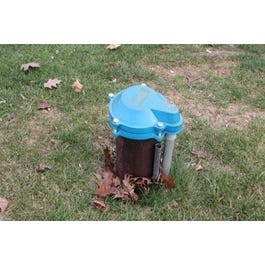
[ad_1]
When it comes to spring cleaning, many overlook two important areas of the kitchen: the refrigerator and pantry. Since these areas are primarily used for storage, they are harder to clean, but neglecting them can cause harm to your family. Even if your kitchen appears to be clean on the surface, harmful bacteria can still be present, even though you cannot see or smell it. Read on and follow these tips for a healthier, cleaner kitchen.
Clean the inside of your refrigerator weekly. Look through your refrigerator for any unnoticed spills and clean them with hot soapy water, rinse with a wet cloth, then dry. It is best to use single-use paper towels instead of kitchen towels so you can throw them away when done. Make sure to check and clean behind and under any drawers and shelves, as well as any small gaps. It is not recommended to use harsh cleaning chemicals inside your refrigerator due to the risk of contaminating other foods with chemical residue. Check condiments or any other items that have been in your refrigerator for long periods of time and throw away anything that has past its use-by date.
Spring is also a good time of the year to check the pantry for items past their use-by dates. Throw away any items past this date, including spices. Over time, spices will lose their potency and the flavor that they were intended to have. Remove everything from the pantry so that you can clean each shelf. Check cans and throw out any that are leaking, rusted, badly dented, or bulging. When placing items back into the pantry, put items that have closer use-by dates in the front, and items with later use-by or best-by dates in the back to avoid waste. “Use-by” dates indicate that perishable products should be consumed by the date listed on the package or discarded once the date has passed. “Best-by” dates inform shoppers that after the specified date, the shelf-stable product is safe to use or consume, but has exceeded the window for optimal taste or performance.
Use this spring season to set a goal of wasting less food by checking your refrigerator and pantry often for use-by dates. In the future, try to clean out your refrigerator at least once a week, but clean your countertops daily. Regularly clean other kitchen surfaces such as appliances, cutting boards, and utensils to keep them safe from illness-causing bacteria. When cleaning counters and surfaces, start with hot soapy water. Once the surfaces are clean, you can disinfect them with a diluted chlorine bleach solution. Follow the guidelines on the bottle for the right concentration for kitchen surfaces. Once you apply this solution, allow the surfaces to air dry.
If you have any questions on this topic, or any food safety questions, contact your local Penn State Extension Office.
Nicole McGeehan is a Penn State Extension educator serving Monroe County and surrounding counties in Northeast Pennsylvania.
[ad_2]
Source link






